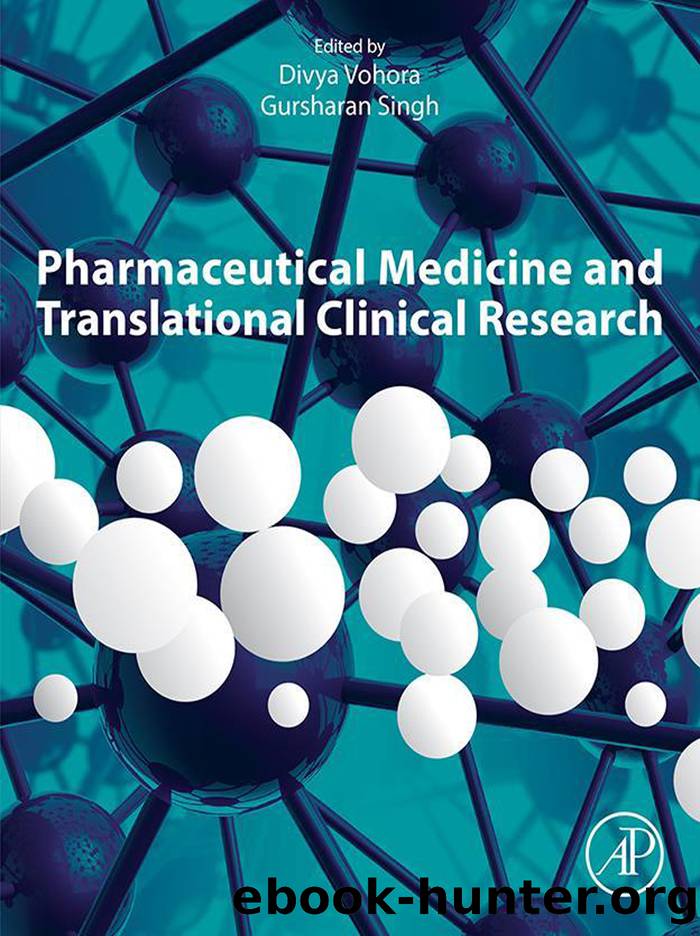Pharmaceutical Medicine and Translational Clinical Research by Vohora Divya;Singh Gursharan; & Gursharan Singh

Author:Vohora, Divya;Singh, Gursharan; & Gursharan Singh [Vohora, Divya & Singh, Gursharan]
Language: eng
Format: epub
Publisher: Elsevier Science & Technology
Published: 2018-09-15T00:00:00+00:00
13.6 Regulatory Status of Complementary Medicines in China
There is no denying the fact that Chinese herbal medicines, also known as traditional Chinese medicines (TCM), have gained worldwide attention in past few years. Beyond China, these medicines have also been adopted by many other countries, which also led to improvement in their regulatory statuses and expansion of their market all over the world [11]. In china, these medicines are currently regulated by the âChina Food and Drug Administrationâ or CFDA [140] (sometimes also referred as âState Food and Drug Administration,â or SFDA) as per section 102 of the âDrug Administration Law of the People's Republic of China,â 2001 [8,141]. Subsequent to the enactment of this law, the SFDA also released separate regulations for its implementation, which came into full effect in 2002 [142]. These herbal drugs can be registered under the Department of Drug Registration (Dept. of TCMs & Ethno-Medicines Supervision), however, they can also be registered as functional foods (health foods) depending upon the intended usage. The regulatory approval for the manufacture of these food products is granted by the âDepartment of Food Licenseâ of the SFDA [140].
The requirements for the registration of these âdrugsâ (in accordance with the âDrug Administration Lawâ) have been specified in the âProvisions for Drug Registrationâ (order no 28) of the SFDA [143]. These rules are pertinent to all applications for the manufacture, import, quality control (for drug registration), clinical trials, and other related dealings in mainland China (Article 2). Later on, SFDA also came out with âSupplementary Requirements on the Registration of TCMâ and specifically highlighted the distinctive features of TCM registration to promote the registration as well as the development of the traditional and the minority medicines [144]. For the grant of this registration, a dossier, including the proof of safety, efficacy, and quality of the product, is required to be submitted (Article 13) in the format prescribed in Annex 1 and 2 for traditional Chinese and natural medicines respectively (Article 170). It can be applied for new Chinese and natural medicines (that have not been marketed in the state), generic medicines (for new indications, new routes or changes in the dose), and for the import or export of these drugs (also in case of Hong-Kong and Macau, which are not the part of the mainland). Furthermore, evidences for the preclinical efficacy of the unknown active ingredients extracted from the plants, new crude Chinese drugs, or their preparations, should be submitted with the study of the source of the drug as well as the pretreatment and processing details. (Article 21). Upon submission, these applications are reviewed and if approved, a unique drug approval number is allotted in a SFDA specified format: Name Z+Four-digit year number+four-digit sequence number, where, the alphabet following the name represents the category of the product. As examples, the traditional Chinese medicines are represented by âZ,â whereas the other drugs, like pharmaceutical products, biological products, and the repacked imported drugs are represented by the alphabets H, S, and J respectively (Article 171) [143].
Download
This site does not store any files on its server. We only index and link to content provided by other sites. Please contact the content providers to delete copyright contents if any and email us, we'll remove relevant links or contents immediately.
Psychiatry and Racial Liberalism in Harlem, 1936-1968 by Dennis A. Doyle(106)
Doctors of Deception : What They Don't Want You to Know About Shock Treatment by Linda Andre(89)
The Daly Dish Bold Food Made Good by Daly Gina;Daly Karol;(84)
Pharmaceutical Medicine and Translational Clinical Research by Vohora Divya;Singh Gursharan; & Gursharan Singh(84)
The Stem Cell Hope by Alice Park(83)
How Not to Study a Disease by Karl Herrup(81)
Doctoring Freedom by Gretchen Long(79)
The Cure for Women by Lydia Reeder(77)
How We Became Sensorimotor: Movement, Measurement, Sensation by Mark Paterson(75)
Tissue Engineering: Principles and Practices by Fisher John P(74)
9781836207139 by Miguel Gonzalez(74)
Proper People: Early Asylum Life in the Words of Those Who Were There by David Scrimgeour(72)
A Secret Mind by Kaye Kelly(72)
Medical Applications of Beta-Glucan by Gürünlü Betül;(63)
Summary and Analysis of Patient H.M. by Worth Books(62)
The Changing Face of Medicine : Women Doctors and the Evolution of Health Care in America by Ann K. Boulis; Jerry A. Jacobs(62)
Women Doctors in War by Judith Bellafaire; Mercedes Herrera Graf(62)
Mixing Medicines by Griffin Clare;(59)
The Right Carb by Nicola Graimes(58)
